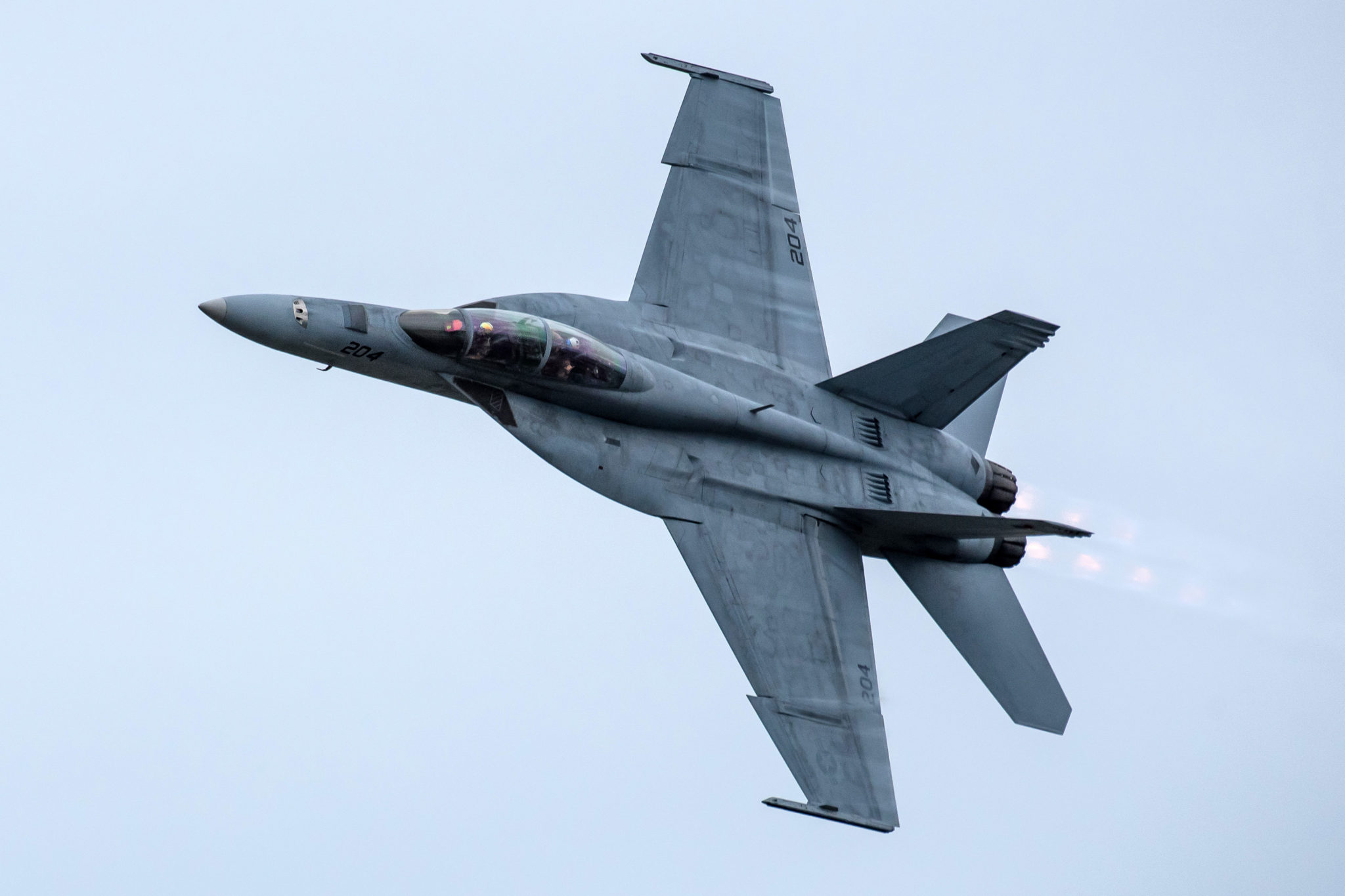
Aerodynamics is a fascinating field that delves into the behavior of air and other gases in motion. Understanding the principles of aerodynamics is crucial in various industries, including aviation, automotive engineering, and sports. From the design of airplanes and cars to the development of high-speed trains and cutting-edge sports equipment, aerodynamics plays a pivotal role in shaping modern technology and innovation. In this article, we'll explore 18 intriguing facts about aerodynamics, shedding light on the science behind lift, drag, and the complex interactions between objects and the air around them. Delve into the world of aerodynamics as we uncover the principles that govern flight, speed, and efficiency, offering a deeper appreciation for the invisible forces that shape our technological advancements.
Key Takeaways:
- Birds inspired the first human flight, leading to modern aerodynamics. Engineers optimize wing shapes for aircraft performance, influencing fuel efficiency and maneuverability.
- Aerodynamics impacts sports, architecture, renewable energy, and transportation. It shapes competitive cycling, race cars, high-speed trains, and even the design of modern bridges.
Birds inspired the first human flight.
The concept of aerodynamics can be traced back to the earliest endeavors of human flight. The Wright brothers, credited with inventing the first successful airplane, drew inspiration from observing birds in flight. By studying the way birds manipulated their wings and feathers to achieve lift and maneuverability, the Wright brothers applied these principles to the design of their aircraft, leading to the birth of modern aerodynamics.
The shape of an aircraft's wings affects its aerodynamics.
The design of an aircraft's wings plays a pivotal role in its aerodynamic performance. The shape and curvature of the wings, known as airfoil design, significantly impact lift, drag, and stability during flight. Engineers meticulously analyze and optimize wing configurations to enhance aerodynamic efficiency, ultimately influencing the aircraft's maneuvering capabilities and fuel efficiency.
Aerodynamics is essential in automotive design.
The principles of aerodynamics extend beyond aviation and into the realm of automotive engineering. Car manufacturers prioritize aerodynamic design to minimize air resistance, also known as drag, thereby improving fuel economy and overall performance. Sleek, streamlined shapes and strategic airflow management contribute to reducing drag and enhancing stability at high speeds, reflecting the critical role of aerodynamics in modern vehicle design.
Aerodynamic forces are dynamic and multifaceted.
Aerodynamics encompasses a complex interplay of forces that act upon objects moving through the air. These forces include lift, which enables flight by counteracting the force of gravity, and drag, which opposes the forward motion of an object. Understanding and harnessing these aerodynamic forces are fundamental in optimizing the performance and efficiency of various flying and moving vehicles.
The study of aerodynamics revolutionized sports equipment.
Athletic equipment, such as cycling helmets and racing suits, has undergone significant advancements due to insights from aerodynamics. By leveraging aerodynamic principles, sports engineers and designers have developed streamlined gear to reduce air resistance, ultimately enhancing athletes' speed and performance in competitive sports such as cycling, skiing, and speed skating.
Aerodynamics influences architectural design.
Aerodynamics extends its influence to architectural endeavors, particularly in the design of skyscrapers and bridges. Engineers and architects leverage aerodynamic principles to mitigate wind-induced structural stresses and optimize building shapes to minimize drag and turbulence. This integration of aerodynamics in architectural design ensures the structural integrity and stability of iconic urban structures.
Aerodynamics plays a crucial role in renewable energy technologies.
The field of aerodynamics contributes significantly to the development of renewable energy technologies, particularly wind turbines. Engineers utilize aerodynamic principles to maximize the efficiency of wind turbine blades, enhancing energy capture from wind currents. This application underscores the far-reaching impact of aerodynamics in advancing sustainable energy solutions.
Aerodynamics impacts the performance of competitive cycling.
In the realm of competitive cycling, aerodynamics profoundly influences racing strategies and equipment design. Cyclists and teams prioritize aerodynamic positioning and streamlined gear to minimize air resistance, gaining a competitive edge in races. The pursuit of aerodynamic efficiency has led to innovations in bicycle frame design, wheel configurations, and rider posture, shaping the dynamics of professional cycling.
Aerodynamics enhances the efficiency of modern aircraft engines.
Aerodynamics plays a pivotal role in optimizing the performance of aircraft engines. By streamlining airflow and reducing turbulence, engineers enhance the efficiency of jet engines, leading to improved fuel economy and reduced environmental impact. The integration of aerodynamic principles in engine design exemplifies the continuous pursuit of enhanced efficiency in aviation.
The concept of aerodynamics dates back to ancient civilizations.
The foundational principles of aerodynamics have roots in ancient civilizations, where early innovators explored the dynamics of airflow and resistance. Ancient cultures, including the Greeks and Chinese, delved into rudimentary aerodynamic concepts, laying the groundwork for the evolution of aerodynamics as a scientific discipline.
Aerodynamics influences the design of competitive race cars.
In motorsports, aerodynamics profoundly shapes the design and performance of competitive race cars. Engineers meticulously craft aerodynamic profiles to optimize downforce, stability, and airflow management, ultimately enhancing cornering speeds and overall racing performance. The integration of aerodynamics in race car design underscores its impact on the pursuit of speed and precision.
The concept of drag is central to aerodynamics.
Drag, a fundamental aerodynamic force, represents the resistance encountered by an object moving through a fluid medium, such as air or water. Understanding and minimizing drag through streamlined design and airflow management are central tenets in optimizing the performance and efficiency of various vehicles and structures.
Aerodynamics influences the design of high-speed trains.
The design of high-speed trains integrates aerodynamic principles to minimize air resistance and enhance operational efficiency. Streamlined train profiles and advanced airflow control technologies contribute to reducing drag and optimizing speed, reflecting the pivotal role of aerodynamics in shaping the future of rail transportation.
Aerodynamics impacts the performance of competitive sailing vessels.
In the realm of competitive sailing, aerodynamics profoundly influences the design and performance of sailing vessels. Sailors and yacht designers leverage aerodynamic principles to optimize sail shapes and airflow dynamics, enhancing speed and maneuverability on the water. The pursuit of aerodynamic efficiency has driven innovations in sail design and rigging configurations, shaping the dynamics of competitive sailing.
Aerodynamics shapes the design of modern bridges.
Aerodynamics plays a crucial role in the design and engineering of modern bridges, particularly those spanning long distances or exposed to strong winds. Engineers leverage aerodynamic principles to minimize wind-induced vibrations and structural stresses, ensuring the stability and safety of bridge structures. This application underscores the interdisciplinary significance of aerodynamics in civil engineering.
Aerodynamics drives innovation in aerospace technology.
The field of aerospace engineering continually harnesses aerodynamic principles to drive innovation in aircraft design, propulsion systems, and space exploration. From supersonic flight to spacecraft reentry, aerodynamics underpins the development of advanced aerospace technologies, shaping the future of air and space travel.
The study of aerodynamics informs the design of competitive swimming attire.
Aerodynamics influences the design of competitive swimwear, with a focus on reducing water resistance and enhancing hydrodynamic efficiency. Swimmers and apparel engineers leverage aerodynamic principles to develop sleek, form-fitting swimsuits that minimize drag and optimize performance in competitive swimming events. This emphasis on aerodynamic design reflects the pursuit of speed and efficiency in aquatic sports.
Aerodynamics contributes to the efficiency of wind-resistant structures.
The integration of aerodynamics in the design of buildings and structures in wind-prone regions enhances their resilience and stability. Architects and engineers leverage aerodynamic principles to mitigate wind-induced pressures and turbulence, ensuring the structural integrity of edifices in challenging environmental conditions. This application underscores the role of aerodynamics in fortifying structures against natural forces.
The intricate realm of aerodynamics permeates diverse facets of human innovation, from the evolution of transportation and sports technology to the resilience of architectural marvels. By harnessing the fundamental principles of airflow dynamics, engineers, designers, and innovators continue to propel advancements across various domains, shaping the trajectory of modern achievements and sustainable solutions. The enduring influence of aerodynamics underscores its indispensable role in fostering progress and ingenuity, driving transformative developments that resonate across global landscapes.
Conclusion
In conclusion, aerodynamics is a fascinating field that plays a crucial role in various aspects of our lives, from designing efficient vehicles to understanding the flight of birds and insects. The principles of aerodynamics continue to shape technological advancements, from aircraft and automobiles to sports equipment and even architectural design. By delving into the intricate interplay of forces and airflow, scientists and engineers have unlocked countless innovations that have transformed the way we live and interact with the world around us. As we continue to push the boundaries of what is possible, the principles of aerodynamics will undoubtedly remain a cornerstone of progress and innovation.
FAQs
What are the practical applications of aerodynamics?Aerodynamics has numerous practical applications in various fields, including aircraft design, automotive engineering, wind turbine technology, and sports equipment development. Understanding aerodynamics is crucial for optimizing performance, efficiency, and safety in these industries.
How does aerodynamics impact everyday life?Aerodynamics influences everyday life in numerous ways, from the design of vehicles and buildings to the performance of sports equipment. It plays a pivotal role in shaping transportation, energy production, and even the design of everyday objects, contributing to advancements that enhance our daily experiences.
Aerodynamics enthusiasts, your curiosity doesn't have to end here! Delve into the life of Ludwig Prandtl, a pioneering figure in fluid dynamics. Celebrate National Paper Airplane Day on May 26th with intriguing facts about this beloved pastime. Supercar aficionados, buckle up for a thrilling ride through the world of high-performance vehicles. Whether you're fascinated by the minds behind aerodynamic breakthroughs, enjoy the simple pleasure of folding paper planes, or crave the adrenaline rush of cutting-edge automotive engineering, there's plenty more to explore.
Was this page helpful?
Our commitment to delivering trustworthy and engaging content is at the heart of what we do. Each fact on our site is contributed by real users like you, bringing a wealth of diverse insights and information. To ensure the highest standards of accuracy and reliability, our dedicated editors meticulously review each submission. This process guarantees that the facts we share are not only fascinating but also credible. Trust in our commitment to quality and authenticity as you explore and learn with us.


